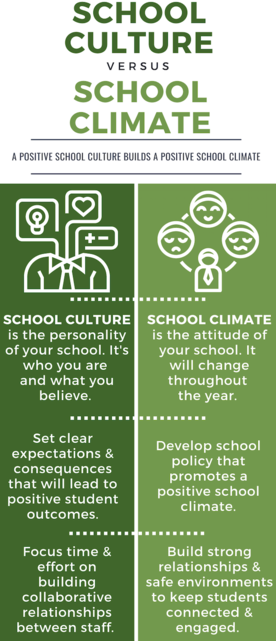|
Contents:
October is Bullying Prevention Awareness Month
Every October, individuals from across the nation unite with the powerful message that bullying should never be a part of childhood.
Every day thousands of young people experience bullying from their peers while at school, after school in their neighborhoods, and even when they are at home, through social media and texts. There are many ways to support bullying prevention as an individual or with friends and family, and within your school or community.
One-day or single event classroom lesson plans
Week-long classroom lesson plan
-
Elementary school: A complete classroom tool kit for discussing bullying prevention with young students. Features free downloads of daily activities, games and contests.
-
Middle/high school: Promote bullying awareness in your middle or high school classroom by using the activities and resources in this 5 day toolkit.
Year-long classroom lesson plans
Early Childhood
Social and emotional learning (SEL) is the process through which children and adults understand and manage emotions, set and achieve positive goals, feel and show empathy for others, establish and maintain positive relationships, and make responsible decisions. SEL can be taught in a natural format in time increments from 5 to 15 minutes and can occur during playtime, designated educational time, and daily conversations with students.
|
Emotional literacy in children develops due to having respectful, caring, supportive relationships with adults. Building a robust emotional literacy foundation helps children identify, understand, and express emotions in a healthy way; recognize, label, and understand feelings in oneself and others; tolerate frustration better; engage in less destructive behavior, and generally have more significant academic achievement.
Click here for early childhood staff training and classroom resources.
Elementary & Secondary
The Collaborative for Academic, Social, and Emotional Learning’s (CASEL) integrated framework promotes intrapersonal, interpersonal, and cognitive competence. There are five core competencies, that can be taught in many ways across many settings. The competency of Self-Awareness is the ability to accurately recognize one’s own emotions, thoughts, and values and how they influence behavior. The ability to accurately assess one’s strengths and limitations, with a well-grounded sense of confidence, optimism, and a “growth mindset.” Identifying emotions in ourselves and in other people plays a crucial role in the development of emotional regulation.
Click here for elementary & secondary staff training and classroom resources.
|
|

While school climate and culture have been defined in many ways and are used interchangeably, they are two separate terms that overlap and influence one another. Think of school climate as the attitude and school culture as the personality. One drives and determines the other. Culture is deeper than climate; it is more to the CORE. The culture is who you are and what you believe as a team. The climate can change throughout the year, and often does when there are not robust cultural systems in place.
School climate aspects focus on building strong, positive teacher-student interactions and building environments where students feel safe, connected, and engaged. These set the foundation for students to learn and achieve their best. School policy that promotes a strong, positive school climate focuses on social, emotional, ethical, civic, and intellectual skills, knowledge, dispositions, and engagement, plus a comprehensive system to address barriers to learning and teaching to re-engage students who may veer off-track.
School culture aspects center more on the personality of your school. There are clear, appropriate, consistent expectations and consequences to address disruptive student behaviors; which leads to more focus on learning and high-expectations for student achievement. A lot of time and effort is placed on building collaborative relationships between the school leader and faculty, as well as between faculty members to promote increased teacher satisfaction, and decreased turnover.
Multi-tiered Systems of Support (MTSS) create the positive culture in the school. The positive outcomes in behavior, academics, and social-emotional learning become the climate of the school. Climate is the measure and culture is the change agent. We cannot change the climate of a student’s life outside of the school building, but we can create a climate at school that encourages all students, those that have experienced adversity at home or in the community, to feel loved, connected, and successful. We can also create a climate where teachers see the difference they are making.
|
|